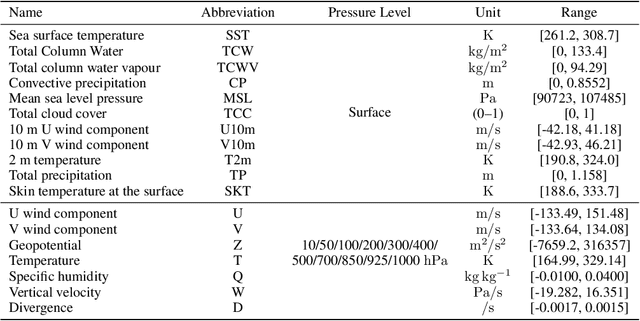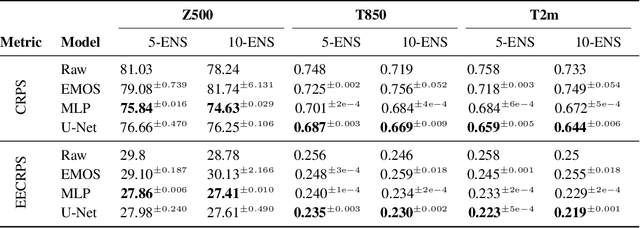Luca Kummer
ENS-10: A Dataset For Post-Processing Ensemble Weather Forecast
Jun 29, 2022



Abstract:Post-processing ensemble prediction systems can improve weather forecasting, especially for extreme event prediction. In recent years, different machine learning models have been developed to improve the quality of the post-processing step. However, these models heavily rely on the data and generating such ensemble members requires multiple runs of numerical weather prediction models, at high computational cost. This paper introduces the ENS-10 dataset, consisting of ten ensemble members spread over 20 years (1998-2017). The ensemble members are generated by perturbing numerical weather simulations to capture the chaotic behavior of the Earth. To represent the three-dimensional state of the atmosphere, ENS-10 provides the most relevant atmospheric variables in 11 distinct pressure levels as well as the surface at 0.5-degree resolution. The dataset targets the prediction correction task at 48-hour lead time, which is essentially improving the forecast quality by removing the biases of the ensemble members. To this end, ENS-10 provides the weather variables for forecast lead times T=0, 24, and 48 hours (two data points per week). We provide a set of baselines for this task on ENS-10 and compare their performance in correcting the prediction of different weather variables. We also assess our baselines for predicting extreme events using our dataset. The ENS-10 dataset is available under the Creative Commons Attribution 4.0 International (CC BY 4.0) licence.
 Add to Chrome
Add to Chrome Add to Firefox
Add to Firefox Add to Edge
Add to Edge